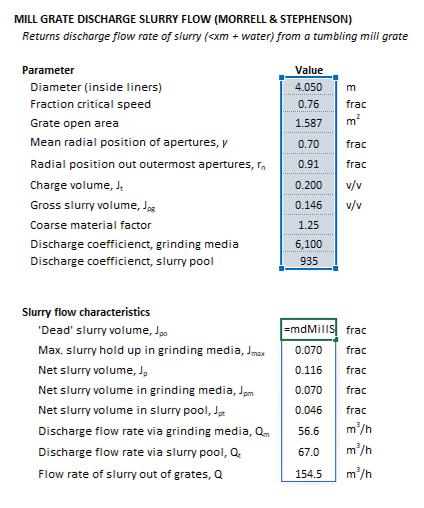Tumbling Mill (Slurry Flow)
Jump to navigation
Jump to search
Description
This article describes the Morrell and Stephenson (1996) method for estimating the volumetric flow rate of slurry discharged from a grate discharge tumbling mill.[1]
Model theory
Excel
The Morrell and Stephenson grate discharge mill slurry flow model may be invoked from the Excel formula bar with the following function call:
=mdMillSlurryFlow_MorrellStephenson(Parameters as Range)
Invoking the function with no arguments will print Help text associated with the model, including a link to this page.
The Parameters array and model results are defined below in matrix notation, along with an example image showing the selection of the same arrays in the Excel interface:
|
|
See also
- Dynamic Perfect Mixing ball mill model
- AG/SAG Mill (Variable Rates)
- AG/SAG Mill (Variable Rates, Dynamic)
References
- ↑ Morrell, S. and Stephenson, I., 1996. Slurry discharge capacity of autogenous and semi-autogenous mills and the effect of grate design. International Journal of Mineral Processing, 46(1-2), pp.53-72.

